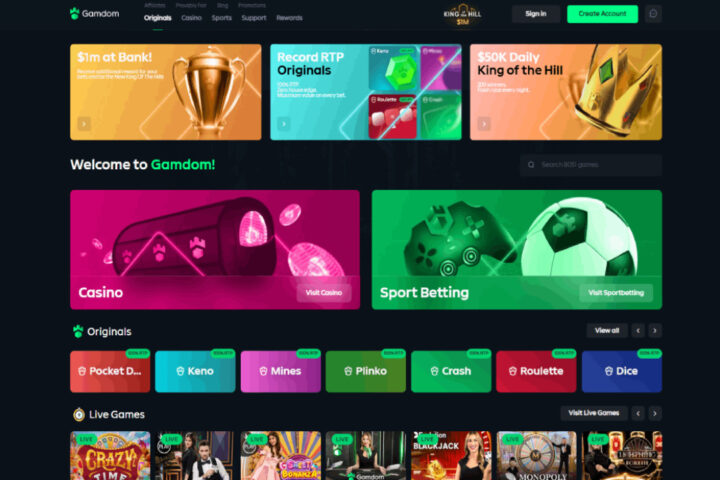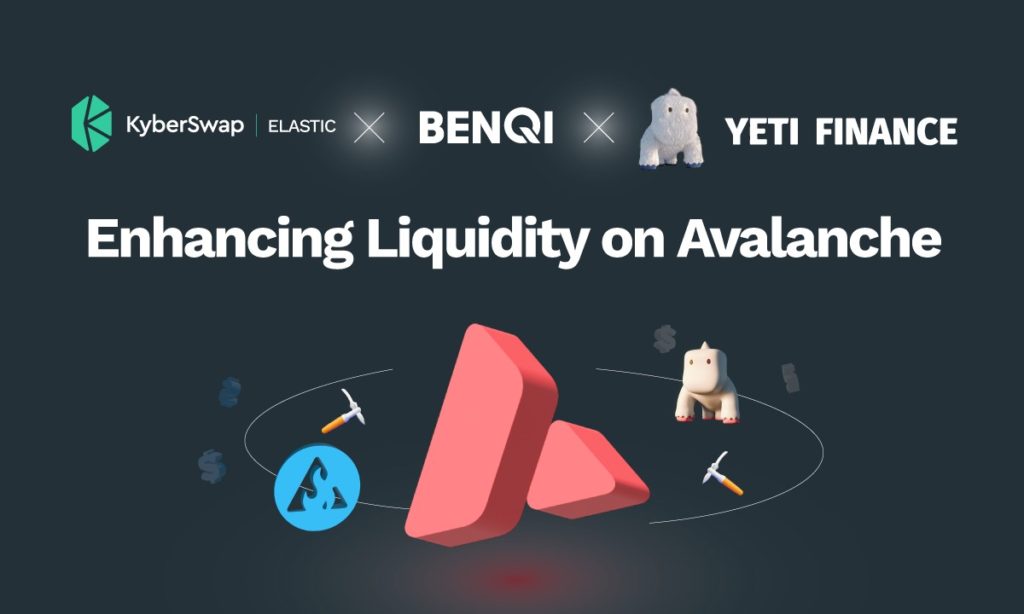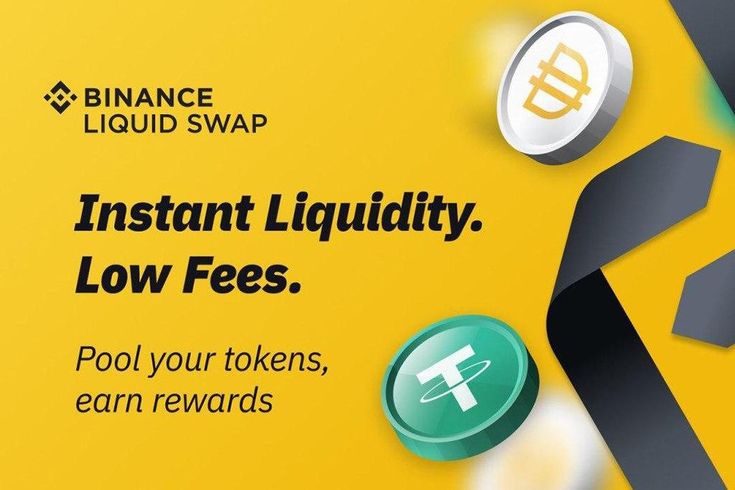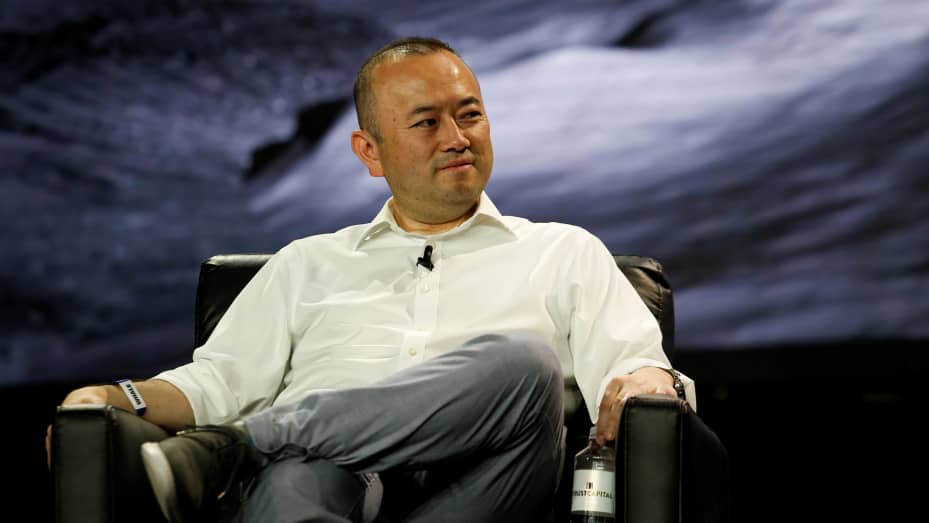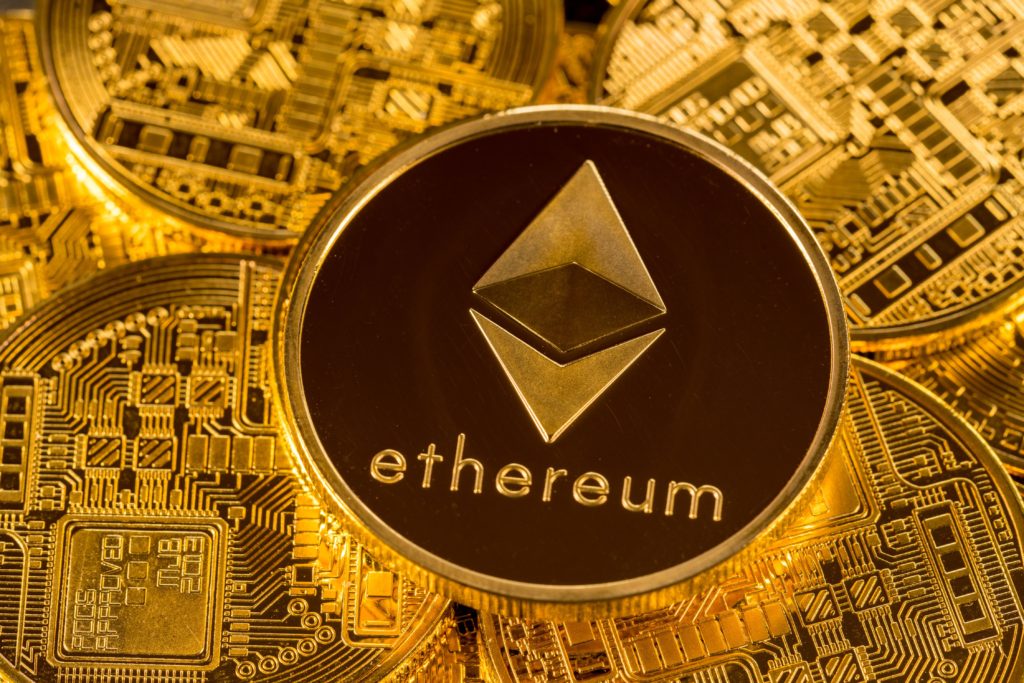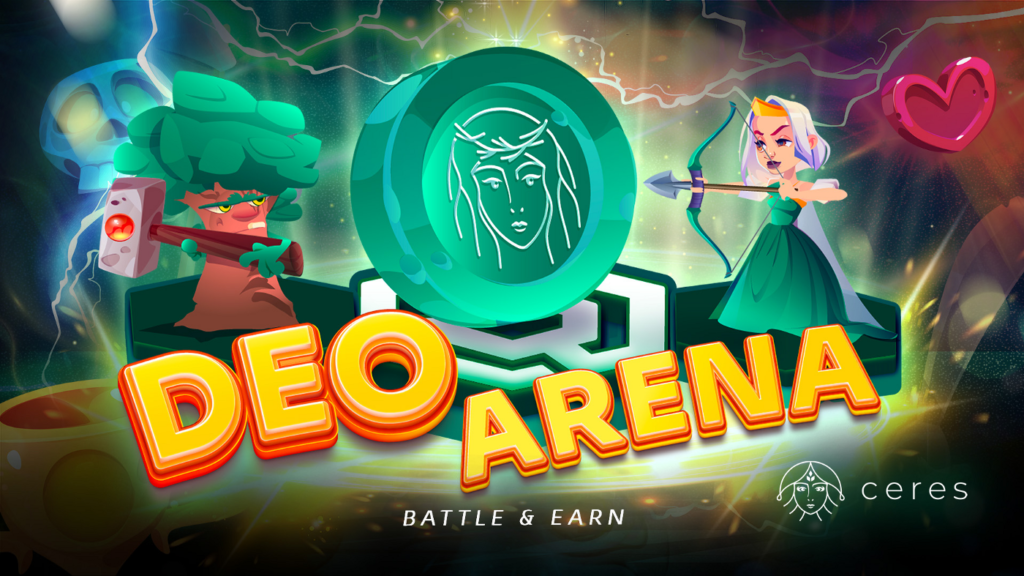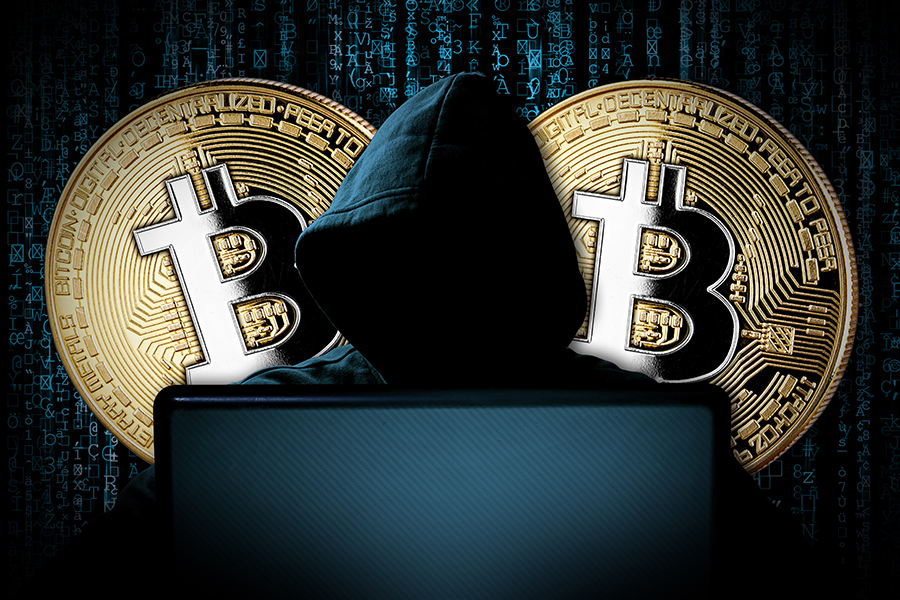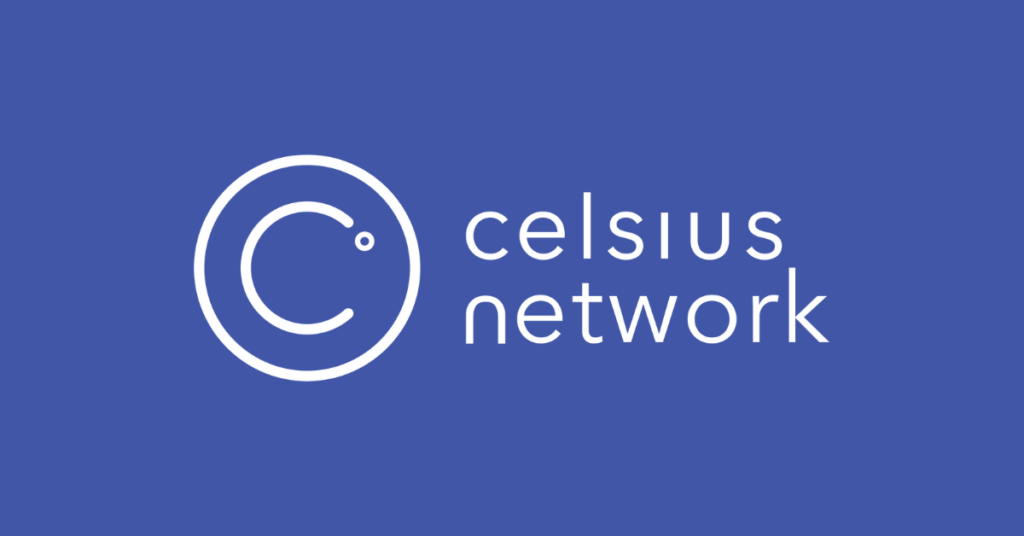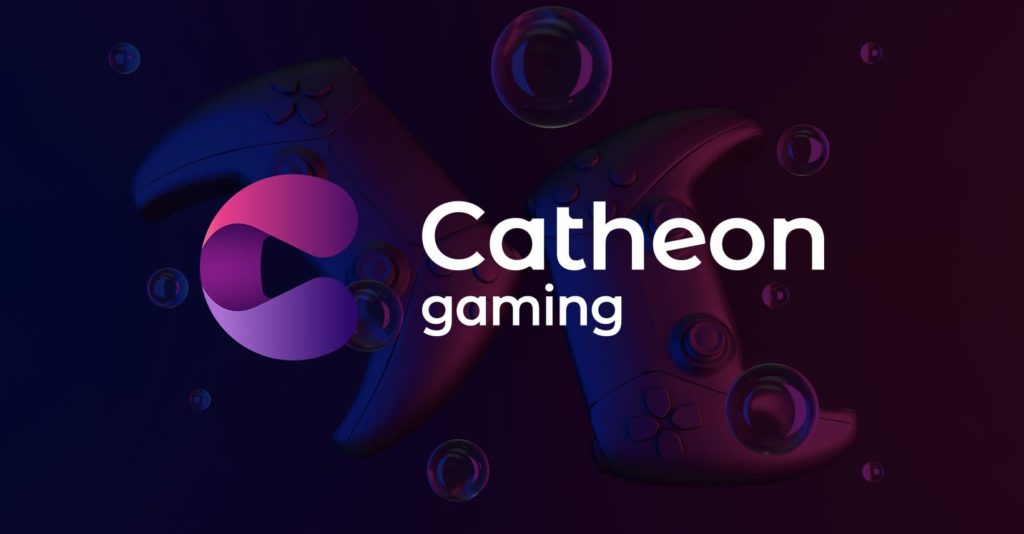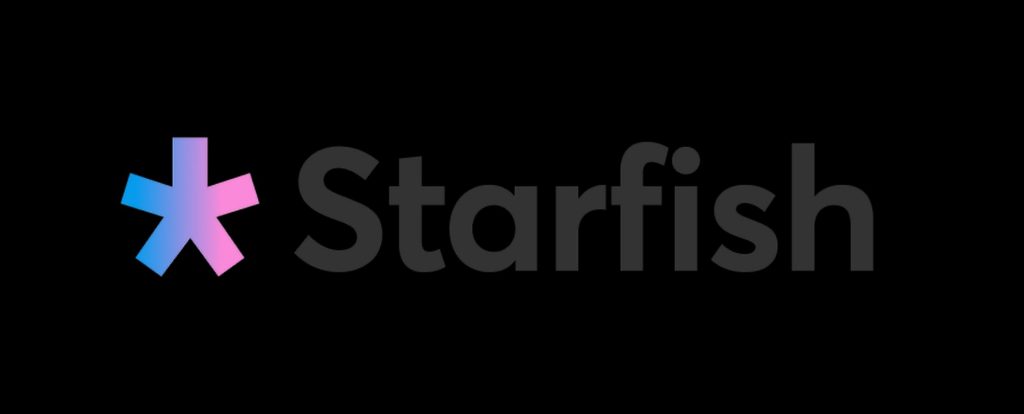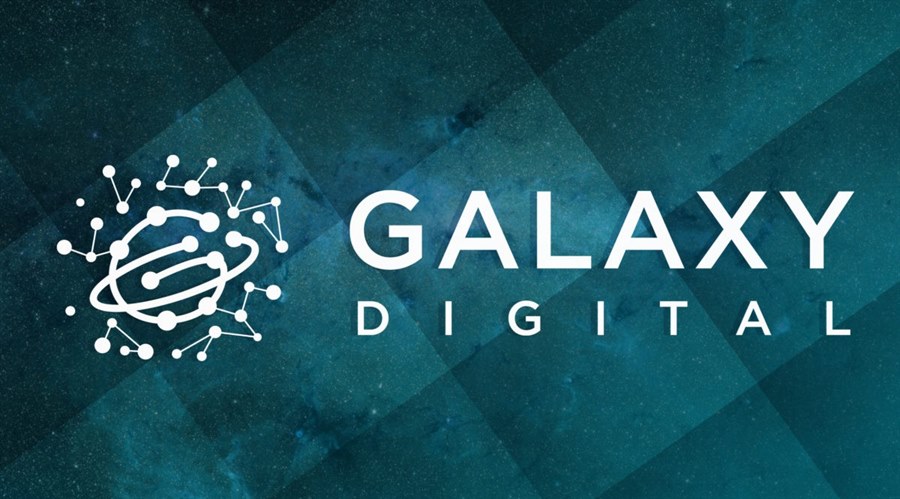Singapore, Aug. 17 — BENQI and Yeti Finance have chosen to partner with the highly capital efficient KyberSwap in a joint initiative to enhance liquidity and provide the best rates for sAVAX and YUSD tokens on Avalanche (AVAX).
This first phase of this joint initiative is set to bring liquidity providers over $200,000 in liquidity mining rewards, with more incentives to come in the near future.
BENQI is a decentralized non-custodial liquidity market and liquid staking protocol built on Avalanche. Benqi Liquid Staked AVAX (sAVAX) is the token that users receive when staking their AVAX on the Benqi Liquid Staking (BLS) protocol. AVAX holders can get sAVAX by staking AVAX on BENQI.
This is not the first time BENQI has partnered with KyberSwap for its capital efficiency benefits. Learn about BENQI’s first joint initiative with KyberSwap.
Yeti Finance is a cross-margin lending protocol on Avalanche that allows users to borrow up to 21-fold against their portfolio of liquidity provider (LPs) tokens, staked assets such as sAVAX and yield-bearing stablecoins in a single debt position for zero interest. Borrowers receive YUSD, an overcollateralized stablecoin that can be swapped for additional assets and subsequently re-deposited into Yeti Finance to build a leverage position.
What is KyberSwap Elastic?
KyberSwap’s newest protocol, dubbed Elastic, is a tick-based automated market maker that gives LPs the advantages of concentrated liquidity and the flexibility to achieve capital efficiency and manage risks.
With concentrated liquidity, LPs have the flexibility to supply liquidity to an Elastic pool, either by concentrating the liquidity to a narrower price range or setting it to a wider price range. Concentrated liquidity would use the pool’s liquidity more efficiently, mimicking much higher levels of liquidity and achieving better slippage, volume and earnings for LPs while a wider range would ensure liquidity for uncorrelated token pairs such as USD Coin (USDC) and Ether (ETH) to remain active even with big price swings during high market volatility.
KyberSwap Elastic also has a reinvestment curve, which compounds fees by automatically reinvesting the fee earnings of LPs back into the liquidity pool so LPs earn higher APY while saving time.
LPs on KyberSwap Elastic can also choose from multiple fee tiers to select the best-suited rates for individuals, taking into consideration factors such as token volatility, individual risk appetites and more. In addition, KyberSwap Elastic comes with a Just-In-Time (JIT) Attack Protection feature, which protects LP earnings from snipe attacks that would reduce the earnings of other honest LPs. So, LPs can earn securely while enjoying peace of mind.
Starting from Aug. 17, 2022, liquidity providers can add liquidity to the eligible sAVAX and YUSD pools on KyberSwap Elastic on Avalanche and earn KNC, QI and YETI rewards.
With KyberSwap’s Elastic protocol, LPs can enjoy benefits such as concentrated liquidity and compounding fees, providing higher capital efficiency and optimized rewards. KyberSwap Elastic also has JIT protection, so LPs will have their earnings better protected and enjoy better peace of mind.
BENQI and Yeti finance pools on KyberSwap Elastic: Avalanche
Eligible pools and fee tiers:
- sAVAX and AVAX: 0.01%
- sAVAX and YUSD: 0.04%
- USD Coin (USDC) and YUSD: 0.01%
A full list of eligible pools for yield farming on Avalanche can be viewed on kyberswap.com.
KyberSwap: Benefits for the BENQI and Yeti ecosystem
For traders:
- Best swap rates for sAVAX and YUSD through decentralized exchange (DEX) aggregation while letting users identify other tokens even before they trend or moon via on-chain metrics.
For LPs:
- Concentrated liquidity for sAVAX and YUSD pairs and any other tokens, stables and non-stables
- Auto-compounded LP fees
- Bonus liquidity incentives through yield farming
- Sniping and JIT attack protection to protect earnings for BENQI and Yeti LPs.
For developers
DApps can integrate with KyberSwap’s pools and aggregation API to provide the best rates for their own users, saving time and resources.
With these benefits in mind, KyberSwap is proud to partner with BENQI and Yeti Finance in this initiative to enhance liquidity on Avalanche for the benefit of all four ecosystems.
About Kyber Network
Kyber Network is building a world where any token is usable anywhere. KyberSwap.com, its flagship DEX aggregator and liquidity platform, provides the best rates for traders in DeFi and maximizes returns for liquidity providers.
KyberSwap powers 100-plus integrated projects and has facilitated over $9.9 billion worth of transactions for thousands of users since its inception. It is currently deployed across 12 chains, including Ethereum, BNB Chain, Polygon, Avalanche, Fantom, Cronos, Arbitrum, Velas, Aurora, Oasis, BitTorrent and Optimism.
Digital asset brokerage Genesis said on Wednesday that CEO Michael Moro is stepping down and the company is slashing 20% of its workforce, the latest casualties as the cryptocurrency market unwinds.
Derar Islim, Genesis’ operating chief, will take over as interim CEO while the company searches for a permanent replacement, the company said in a statement.
Genesis is a unit of Digital Currency Group, the crypto investor and conglomerate founded by Barry Silbert. Genesis was early in the market, launching the first over-the-counter crypto trading desk in 2013, and then expanding to become a major lender.
During the 2021 crypto boom, Genesis boosted its book dramatically. Loan originations surged more than sevenfold to $131 billion, and the company increased headcount by 22% to 170 employees. By mid-2022, that number had swelled to 260. A cut of 20% equates to the loss of about 52 jobs.
The rapid turn in the crypto market this year, which sent bitcoin and ethereum tumbling, wiped out firms whose businesses were tied directly to prices of digital assets. Hedge fund Three Arrows Capital, or 3AC, filed for bankruptcy as did brokerage Voyager Digital and crypto lender Celsius Network.
While Genesis has weathered the storm better than other players in the market, the firm suffered significant losses due its exposure to 3AC. In July, Genesis filed a $1.2 billion claim against 3AC because of breached loans.
“Genesis was not immune to the market drop and the damage to overall sentiment,” the company said in a report on second-quarter market observations. “As we’ve stated publicly, Genesis had loan exposure to Three Arrows Capital. Our parent company DCG assumed the liability related to losses on these loans, leaving our balance sheet healthy so Genesis could continue to be a source of strength for our clients.”
Moro, who joined Genesis in 2015 and took over as CEO the following year, will stay on during the leadership transition, Genesis said. The company said it also recently hired new executives as chief risk officer, chief compliance officer and chief technology officer.
Follow Crypto Intelligence on Google News to never miss a story
Taking place on Sept. 18 to 24, ETHSafari is an event that will be held in Kenya to bring together an auspicious group of 1,000 people from Africa and around the world to learn, hack, discuss and celebrate the Ethereum ecosystem, the decentralized future, the use cases transforming Africa, and the people that are building them in the continent.
Safari means “journey” in Swahili. Everyone today is on this journey of decentralization together. The question is: Safari Wapi? Journey to where?
The event will host learning, hacking, speakers, discussions and celebrations to showcase innovation around the region and bridge the gap between the global Ethereum ecosystem and the African ecosystem. The event will feature five main tracks: DAOs, DeFi, Gaming, NFTs and impact.
For those that want to get up to speed before the hackathon, ETHSafari is hosting a two-day bootcamp on Sept. 18 and 19 with both in-person and online content. The hackathon will start on Sept. 1 and run through Sept. 22. It will pair teams with local and international mentors to take on critical challenges and will generally follow the five event tracks, but any teams can enter.
ETHSafari core contributor Sunny Satva said, “Great events leave space for others to bring their creativity and energy. We’ve purposely left lots of gaps in the Nairobi schedule so that our local frens can host events and meetups.” On Sept. 22, ETHSafari will board the “blocktrain,” aka the Madaraka Express, from Nairobi to the coast through the Kenyan savannah and Tsavo National Park with views of Mt. Kilimanjaro. Hacker teams will hack aboard the train while others will attend talks and meetups in other train cars.
Everyone will then arrive at the venue Beneath the Baobabs in Kilifi to welcome drinks in the afternoon and a fireside chat in the evening. There will be a two-day conference to bring together global and local players, strengthening the bonds between ecosystems. The event will close with an epic celebration of the decentralized future on Sept. 24.
Ethereum Foundation Africa Fellow and an instigator of ETHSafari, Benson Njuguna, said, “We’ve already had more than 300 signups for the event with nothing more than some dates and a logo announced to date. It shows that there’s huge interest in the space and we’re excited to fill a gap in hosting the very first Ethereum ecosystem event in the region, and setting the stage for many future ETHSafari events around the continent.”
Also launching at ETHSafari will be Artstorm.nft, a sister project of ETHSafari to transform brown spaces around Kenya into Green Art Spaces together with partners and the local communities.
About ETHSafari
ETHSafari is a DAO, established to raise the profile of African Web3 projects and bridge the gap with the larger Ethereum ecosystem around the world through conferences, hackathons and other projects across the continent.
Learn more about ETHSafari on via its website, Twitter or Instagram.
Support ETH Safari via its Juicebox.
Ceres is proud to announce the launch of DEO Arena, one of the first play-to-earn games in the Polkadot and Kusama ecosystems.
DEO Arena is built on the Sora network and is currently available to play at deoarena.io. In its beta phase, DEO Area is available as a player-vs-player game, with each match costing 4 DEO tokens. Players receive points in each match, which are used to determine their rank on the leaderboard within the DEO Arena league. Each league season will last four weeks. A player must have played at least 100 games to enter the leaderboard.
The prize pool for the first season is a minimum of $20,000 in XOR, divided into four different ranks — meaning over 50% of all participating players could be eligible to win prizes!
There is also an optional NFT Boost, which gives you more season points while playing the game, but the game itself is purely skill-based.
The maps in DEO Arena will be large enough to accommodate several players, which will be necessary when facing other players in Battle Royale mode, which will be available soon. A referral system will allow players to invite their friends to face off in DEO Arena and earn special prizes.
The Ceres team commented:
“It will be quite fun, as many players are going to face each other at the same time, and the last one to survive will take the tokens of all the others. This mode will attract the most attention from users since you can earn a lot with very little money — if you can win, of course.”
See you in the arena!
About Ceres
Ceres has developed several DApps on the Sora network, including: Ceres Tools, the most trustworthy source of information about tokens on the Sora network; Liquidity Locker, a transparent safeguard for the liquidity of projects building on the Sora network; Token Locker, a service for vesting a project’s team tokens integrated with the Ceres Launchpad; the Demeter Farming platform; and most recently, DEO Arena.
The amount stolen in cryptocurrency heists is up 60% this year according to a report by Chainalysis, which estimates the industry has lost $1.9 billion in hacks from January to July of this year.
That’s up from $1.2 billion reported in hacks the year prior.
“No area of cryptocurrency-based crime is bucking the 2022 trend of declining revenue like stolen funds,” the blockchain analytics firm said in a blog post on Tuesday.
The upward trend is also likely to continue, given the increasing severity of crypto hacks this year. $192 million was just stolen this month in a hack on Nomad bridge alone, followed by another $200 million stolen from 8,000 hacked Solana wallets later in the same week.
Much of that is largely due to DeFi protocols, which hackers have been targeting since 2021, Chainalysis said. Protocols, which are programs that connect crypto transactions without a middleman, can make users vulnerable to hackers, as they’re based on open-source code that can be studied by would-be thieves before executing a heist.
The research firm added that cyberattacks have largely come at the hands of North Korean hackers, who US authorities alleged stole at least $1 billion in crypto hacks and laundered money via Tornado Cash, a so-called crypto mixed which the Treasury Department sanctioned this month. Chainalysis estimated those heists likely stemmed from hackers finding an in through DeFi protocols.
Surprisingly, crypto scams are down this year, despite a big rise in 2021. The amount stolen in scams fell 65% to $1.6 billion, which Chainalysis said is in tandem with the fall in the price of bitcoin, which is down about 50% since January.
“Nobody likes a crypto bear market, but the one silver lining is that illicit cryptocurrency activity has fallen along with legitimate activity … Still, with huge increases in stolen funds, we can’t afford to rest on our laurels,” the research firm warned, pointing to the need for increased regulation in the blockchain.
Follow Crypto Intelligence on Google News to never miss a story
A special committee for bankrupt crypto lender Celsius is investigating “allegations of misconduct,” at the company, a lawyer for Celsius said Tuesday.
Joshua Sussberg of Kirkland & Ellis, the lawyer representing Celsius, said in a bankruptcy hearing that the two new board directors that Celsius appointed this summer — David Barse, the former CEO of Third Avenue Management, and Alan Carr, the founder of restructuring services firm Drivetrain — could “take remedial action” depending on the findings of their investigation.
The Celsius bankruptcy docket has swelled with hundreds of letters from Celsius users — its 1.7 million customers are its creditor base in the bankruptcy — with many suggesting they felt defrauded by the positive messaging of founders Alex Mashinsky and Nuke Goldstein.
Those letters pointed to cheery missives like a blog post from June titled, “Damn the Torpedoes, Full Speed Ahead,” which assured Celsius users that the company “has the reserves” to serve them, that they can make withdrawals, and that the company has a “world-class risk management team.”
“We try to read every one of these letters, and we take the accusations therein, as the court does, very seriously,” Sussberg told the court. “If there’s a there there, we are going to find out, and an investigation is being conducted.”
Gregory Pesce of White & Case, who represents the creditors committee (which is made up of a group Celsius customers), told the court about its own investigation. The committee has enlisted M3 Partners as its financial advisors, and hired Elementus, a boutique blockchain consultant to aid its inquiry, Pesce told the court.
Elementus will “help us with the important task of tracking the movements of cryptocurrency on the blockchain so we can find out where the coins went and when, and find out if there’s a way to bring them back to Celsius,” Pesce said.
Celsius is also fielding inquiries from US state and federal agencies and foreign regulators, who are looking into the company’s compliance with state and federal securities laws, Sussberg said. The company has also been cooperating with state lending and money transmitter authorities, he said.
Celsius faces an uncertain road ahead in the Chapter 11 bankruptcy process, where it could pursue a full scale reorganization, a potential sale of assets through bankruptcy, or a combination of both.
At Tuesday’s hearing, Martin Glenn, chief judge of the US Bankruptcy Court for the southern district of New York, also acknowledged broader existential questions facing Celsius, as bereft customers clamored about lost savings. One customer told the court that he had less than $500 left in his checking account, having put most of his savings in Celsius.
“I know this case has generated a great deal of interest, and I think it’s very important that the creditors, whether they’re represented by counsel or not, have an opportunity to make their views known,” Glenn said.
Follow Crypto Intelligence on Google News to never miss a story
Hong Kong and Sydney, Aug. 16, 2022 — Catheon Gaming, named by KPMG-HSBC as one of the 10 leading emerging giants in Asia Pacific and the world’s fastest-growing integrated blockchain gaming and entertainment company, and Cointelegraph Media Group, the world’s largest independent digital assets media holding, are pleased to announce a strategic partnership to further progress its shared vision of bringing forward the mass adoption of blockchain gaming and entertainment.
Exclusive analysis and case studies from Catheon Gaming’s extensive game portfolio will highlight key developments occurring across the broader blockchain gaming market and the latest industry innovations. The partnership represents a significant boost to the blockchain gaming industry through Cointelegraph’s extensive reach comprising over 20 million readers worldwide. More details of the partnership will be unveiled in due course.
Catheon Gaming is well positioned to deliver industry insights given its rapidly growing portfolio of 25-plus games published on behalf of a number of highly successful game development studios, with more than 50 million game cumulative downloads across the existing game portfolio.
About Catheon Gaming
Catheon Gaming, named by KPMG-HSBC as one of the 10 leading emerging giants in Asia Pacific, is the world’s fastest-growing integrated blockchain gaming and entertainment company.
Catheon Gaming is the only end-to-end platform providing world-class technical, publishing and partnership capabilities for the world’s leading game studios, companies and brands seeking to navigate their path into Web3. By being the partner of choice, Catheon Gaming has built the industry’s largest portfolio of blockchain games underpinning its vision to revolutionize the way people play, live and earn.
About Cointelegraph
Cointelegraph is the leading independent publication focused on blockchain technology, with a global presence providing original content from all over the world. Local editorial teams publish unique insights in 11 different languages to a loyal community with interests in emerging technologies, investing and fintech applications. The digital news platform sits within the broader Cointelegraph ecosystem — which includes consulting services to promote blockchain adoption, market analysis and interviews with key figures — as the magazine news publication that delves deeper into key stories, educational content and social media.
William Wu, co-CEO of Catheon Gaming, commented, “We are delighted to be partnering with Cointelegraph, the most influential platform in the blockchain community. We look forward to contributing high-quality educational content and expertise to Cointelegraph’s global audience. We have a firm belief that gaming will be the key driver in accelerating blockchain mass adoption, a shared goal of both Catheon Gaming and Cointelegraph.”
Anastasia Drinveskaya, creative director of Cointelegraph, said, “We are pleased to be partnering with Catheon Gaming, one of the largest and fastest-growing companies in the sector. We look forward to the thought leadership and industry insights that Catheon Gaming can deliver to our audience. We are excited to be shining a spotlight on the blockchain gaming industry, given the high potential for it to drive mass consumer adoption of blockchain technologies.”
Follow Crypto Intelligence on Google News to never miss a story
August 15, 2022 — Starfish Finance is a pioneer project in the Astar incubation project and the first decentralized finance (DeFi) and nonfungible token (NFT) finance platform on Astar Network. It recently closed its seed round led by Next Web Capital, joined by GBV Capital, Parity, Acala, Infinity Ventures Crypto, Tokensoft, Paribus, Alphanonce, MindWorks Ventures, Popfield Ventures, MetaverseHub, Oriole Ventures and others. The round signals a deep and long-term collaboration between Starfish Finance and renowned strategic partners, and the protocol is vigorously supported.
The essence of Starfish Finance derives from the power of community. Since its conception, An exceptional amount of community members have gathered on the social media channels of Starfish Finance.
Their fraternity is now Astar Network’s most valuable and active society. Soon, the Starfish culture will propagate the entire Polkadot community with its unique lifestyle.
The three Excaliburs of Starfish Finance
Based on an enhanced Balancer version 2.0 model, the architecture of Starfish Finance is built around three pillars: stablecoin liquidity pools, cross-chain DeFi and NFT finance.
- Multi-token pools with multiple leading stablecoins
Starfish supports liquidity pools consisting of up to eight crypto assets with customizable weighting, offering more flexibility and risk management for DeFi users. Users can farm yields on Starfish’s stablecoin liquidity pools. In addition to Astar and Polkadot native stablecoins, the pools will support leading ones such as Tether (USDT), USD Coin (USDC) and Dai.
- Boosting cross-chain liquidity efficiency
With its strategic partner Celer Network, a prominent cross-chain asset transfer technology, and the recent cross-consensus messaging format (XCM) update on the Polkadot ecosystem, users will be able to bridge their crypto assets seamlessly across different layer-1 (L1) and layer-2 ecosystems. Starfish Finance has plans to deepen collaboration with a wide range of decentralized protocols outside and inside the Astar network to enlarge the ecosystem.
- Cross-chain NFT lending and borrowing
Starfish’s partnership with Celer Network goes beyond just a ubiquitous DeFi bridge. This time, the latest Celer’s inter-chain message framework is fused within the Starfish Finance protocol. Users can securely lock their NFTs on their native chains, enabling them to borrow various crypto assets cross-chain on Astar Network. The beauty of such a mechanism is that users will not risk security issues locking their NFTs on cross-ecosystem bridges. In addition to Celer’s engineering, Starfish Finance adopts Decentralised Information Asset’s decentralized oracle to acquire tokens and NFT price feeds instantly across centralized exchanges and various L1 ecosystems, including multiple NFT marketplaces, decentralized exchanges and DeFi protocols.
Liberating NFT liquidity
NFT “hodlers” need not sell their beloved NFTs for instant liquidity. Instead, they can collateralize their NFTs to apply for a crypto loan on Starfish Finance. Moreover, lenders will be able to earn yields by providing liquidity in the Starfish Reserve Vault.
To ensure the collateralized NFTs will add more value than risk, Starfish will screen out NFTs that are not qualified as collateral. In the event of a liquidation, SEAN holders will have the chance to bid for blue-chip NFTs at a discount. Besides, once the Starfish decentralized autonomous organization (DAO) is formed, SEAN holders will have voting power to whitelist other cross-chain NFT projects.
The Starfish vision
Community
Starfish Finance is fundamentally community driven. Starfish values its community and endeavors to promote its spirit across communities in other ecosystems. Being part of the Starfish community is to participate in a liberal, fraternal and equal culture.
Collaboration
The Starfish team gathers tenacious believers in Web3. Its leadership actively seeks to partner with distinguished players in the blockchain economy to broaden Starfish users’ experiences in DeFi and NFT finance — on Astar Network and beyond.
Convenience
Through its minimalistic user interface and lively graphics, Starfish unleashes the interoperability of assets between Astar Network and other L1 chains with a smooth user experience that fuses with Starfish’s open and easy-going culture.
What’s next?
In the imminent future, Starfish is launching its public sale on Tokensoft, a tier-one and reputable initial DEX offering platform with a track record of successful token launches for prominent projects like Acala, Moonbeam, Litentry, The Graph, Avalanche and Tezos. In September 2022, Tokensoft will launch Starfish’s $SEAN tokens via two private rounds and one public round.
More strategic partnerships with non-Polkadot native projects will move forward simultaneously. Starfish will be at the core of the Polkadot DeFi ecosystem, and Starfish’s community will enjoy first-mover advantage at the early stages of development. Stay tuned for more Starfish Finance development and strategic partnership updates.
Financial services and investment management firm Galaxy Digital on Monday announced it has terminated the $1.2 billion acquisition of digital asset trust company BitGo as it failed to provide audited financial statements for the year 2021.
The proposed acquisition was the global crypto industry’s first $1 billion deal.
“Galaxy remains positioned for success and to take advantage of strategic opportunities to grow in a sustainable manner,” said Mike Novogratz, CEO and Founder of Galaxy.
“We are committed to continuing our process to list in the US and providing our clients with a prime solution that truly makes Galaxy a one-stop shop for institutions,” he added.
No termination fee is payable in connection with the decision.
Galaxy Digital said it intends to complete the proposed reorganisation and domestication to become a Delaware-based company, and subsequently list on the Nasdaq, upon completion of the SEC’s review and subject to stock exchange approval of such listing.
“Galaxy remains focused on executing its business objectives and driving long-term performance for investors. That includes the planned rollout of Galaxy One Prime,” it said.
Galaxy Digital reported a loss of $554.7 million in the second quarter, up from a loss of $183 million a year ago period, Amod the global crypto meltdown.
BitGo company offers a multi-signature bitcoin wallet service, where keys are divided among a number of owners to manage risk.
Follow Crypto Intelligence on Google News to never miss a story
After whitelist giveaway campaigns in June and July, ZKSpace, the leading zk-Rollup-based Ethereum layer-2 (L2) protocol, is set to roll out the public sale of the James Rodríguez “Zurda” nonfungible token (NFT) collection on Aug. 15, 2022. Zurda — meaning “left foot” in Spanish — is an official collection of commemorative NFTs created in collaboration with football superstar James Rodríguez to be issued on ZKSea, the NFT minting and trading platform of the ZKSpace ecosystem.
The “Zurda” NFT series is the first digital asset collection that assembles all key highlights from James Rodríguez’s illustrious football career spanning three continents.
This limited-edition NFT collection contains 1,500 pieces in four rarity levels: one Platinum, 10 Gold, 400 Silver and 1,089 Bronze. With exquisite artwork digitally hand-painted by professional artists, these digital collectibles give fans a chance to relive iconic moments and build connections with the sports influencer’s global fan community of 70 million.
James Rodríguez is one of the greatest Colombian attacking midfielders of all time. Having a magical left foot and being able to play anywhere behind the front line, he is regarded as one of the most creative players in the game. He previously played for Real Madrid, Bayern Munich and Everton FC, winning a list of honors, including two Champions Leagues, two FIFA Club World Cups and a World Cup Golden Boot.
In launching his commemorative collection, James Rodríguez has joined the likes of athletes like Cristiano Ronaldo — who previously announced his partnership with Binance — in exploring the possibilities of promoting the sport and engaging fans via the influential blockchain innovation of NFTs.
Online assets combined with physical gifts has proven to be a modern and fashionable way to bring fans closer to teams and players. The convergence of the sports industry and the exciting blockchain sub-sector NFT has also seen great success, one example being NBA Top Shot, the marketplace selling basketball video clips, generating over $230 million in sales within a year of its launch.
The different rarity tiers in the “Zurda” NFT collection attach a higher value to the rare collectibles. By selling NFTs of different undisclosed moments through mystery boxes, it also makes the buying process fun and exciting, as no one knows when or what they will own, including the tier of rarity, until a box is opened.
NFTs with digital and real-world benefits
During the public sale, the Platinum and Gold NFTs, which are based on some of the most memorable moments of Rodríguez’s career, will be offered through an auction while the Silver and Bronze NFTs will be sold through mystery boxes two days after the auction closes.
The sole Platinum and 10 Gold NFTs were inspired by a total of 11 memorable moments, including Rodríguez’s 2014 Puskas Award-winning goal. The auction will begin on Aug. 15, 2022, at 7 am UTC, on ZKSea.
The mystery box sale will go live on Aug. 17, 2022, 7 am UTC. The price of the mystery boxes is 0.15 Ether (ETH), and they contain “Zurda” NFTs in Silver and Bronze grades. Whitelisted participants will be able to purchase the mystery boxes for just 0.12 ETH.
“Zurda” NFT holders can win signed jerseys and photos that ZKSpace has disclosed on Twitter, a video call or video recorded by James Rodríguez and access to multiple events on ZKSpace, including stake-to-earn events, future NFT giveaways and the ZKSpace Football Metaverse — all in celebration of the 2022 World Cup in Qatar.
Why issue on ZKSpace?
ZKSpace — formerly ZKSwap — is a full-featured L2 protocol leveraging zk-Rollups technology to provide users with an ultra-fast, cheap and secure way to transact cryptocurrencies. ZKSwap’s version 1.0 mainnet launched in February 2021 as the first Ethereum L2 zk-Rollup-based decentralized exchange. It implements all the functions of Uniswap on L2 and solves the problems of slow transaction speeds and high gas fees on the Ethereum mainnet. So far, ZKSwap has gone through three major version iterations — ZKSwap rebranded and upgraded to ZKSpace at the end of 2021 — and has carried out hundreds of function iterations and optimizations without any security incidents.
ZKSea is the world’s first zk-Rollups-based platform supporting layer-1-to-L2 NFT mutual transferring and is the designated NFT-launch, -mint and -trade marketplace of the ZKSpace ecosystem. It is the blockchain technology partner of some prestige brands, including Coach New York, GQ Magazine, Shu Uemura, Atta and more. Moving forward, ZKSea will feature some exclusive NFT drops aside from the James Rodríguez commemorative-edition NFT collection, proving a popular alternative to L1 marketplaces and allowing more people to get involved in NFTs.
For new users looking to be a part of the NFT movement, ZKSpace also features a user-friendly fiat on-ramp, boosting usability and democratizing access to the exciting future of NFTs for anyone worldwide.

